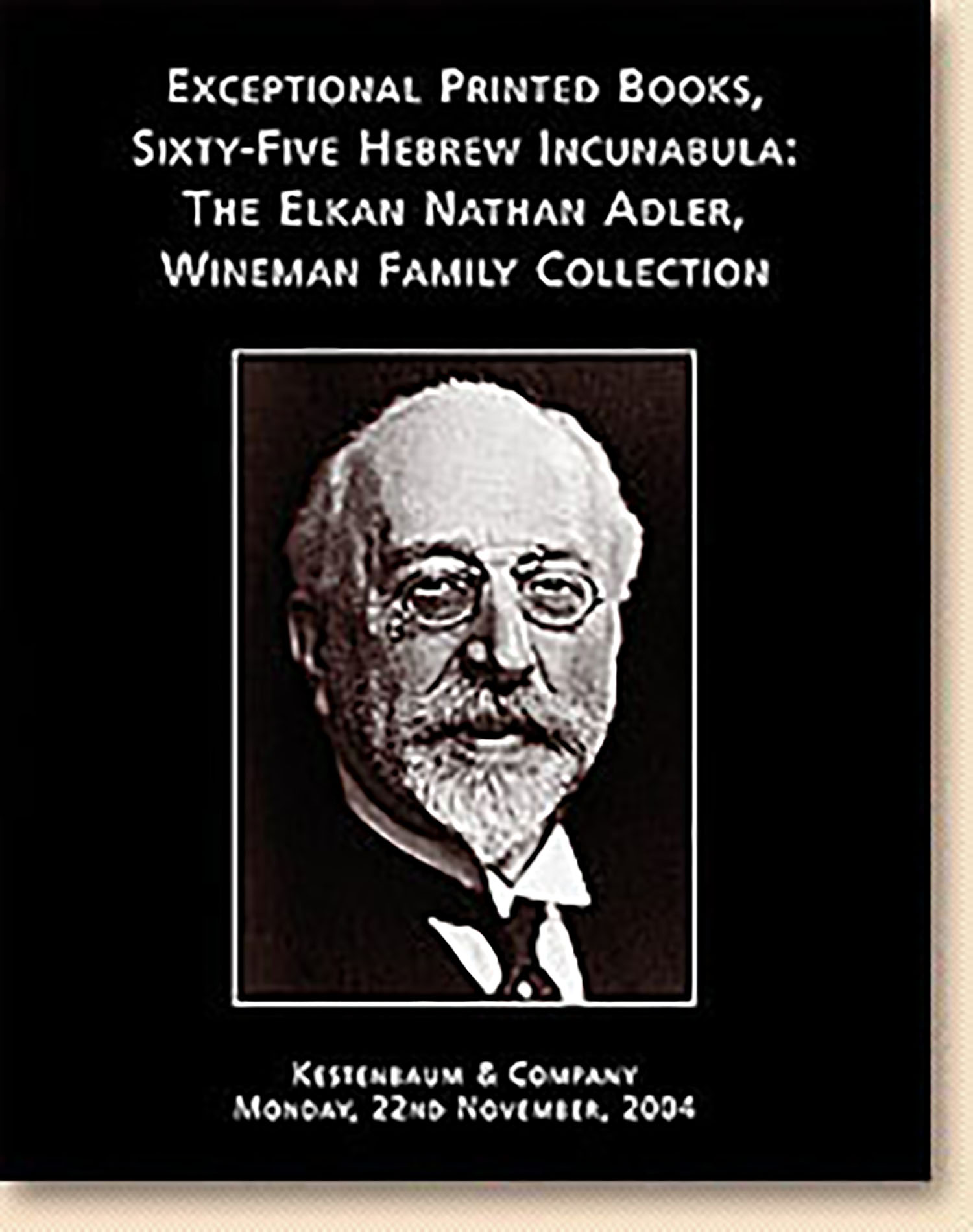Tur, Orach Chaim

AUCTION 26 |
Monday, November 22nd,
2004 at 1:00
Exceptional Printed Books, Sixty-Five Hebrew Incunabula: The Elkan Nathan Adler-Wineman Family Collection
Lot 53
JACOB BEN ASHER OF TOLEDO
Tur, Orach Chaim
Hijar: Eliezer Alantansi 1485
Est: $20,000 - $25,000
PRICE REALIZED $24,000
THE FIRST BOOK PUBLISHED IN THE SPANISH TOWN OF HIJAR (IXAR), ARAGON.
The printer Eliezer Alantansi, was one of the outstanding pioneers of the craft and technique of printing. According to J. Bloch, (Early Hebrew Printing in Spain and Portugal, pp.20-1), all associated with the Hijar Hebrew press were “interesting figure[s]... [and]...character[s].” In addition to being a ”fine scholar and able businessman, Alantansi himself engaged in the practice of medicine.” He was also a colleague of the great statesman, scholar and financier Don Isaac Abrabanel (see She’eiloth R. Shaul Ha-Cohen. Venice, 1574, p.1b). See also B. Friedberg, History of Hebrew Typography in Italy, Spain-Portugal (1956) p.100; B. Netanyahu, Don Isaac Abravanel: Statesman and Philosopher (1968) p.72
Alantansi’s partner was the wealthy businessman and erudite Rabbinical scholar Solomon b. Maimon. "It was Zalmati’s wealth which enabled Alantansi to acquire...an assortmant of square and cursive...types. The latter...the smallest of its kind in the fifteenth century, are distinguished by their sharpness and clearness: the work of a master engraver and type cutter” - This was Alfonso Fernandez de Cordoba, whose “extraordinary skill and fine taste” is evident in “the beautiful square Hebrew types in the press at Hijar.” Although de Cordoba cut “lovely Gothic types for Christian printers, his work for Hebrew printers provoked the ire of the Inquisition. He had to flee and was sentenced to death in absentia" (Bloch).
This Tur is a ”notable edition” which “became an indispensable manual for the knowledge of Jewish life and practice...The publication was one that met the practical needs of the Spanish Jews at the time when Hebrew printing found its way into Spain...” (Bloch, p. 24)
